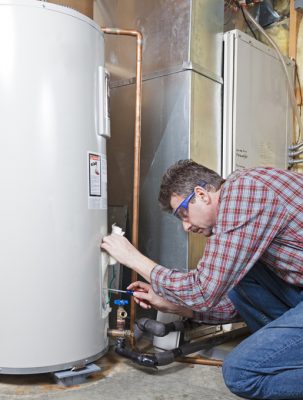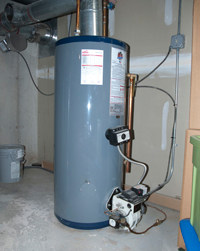Steps to Successfully Maintain Your Home's Hot Water SystemExpert Guidance for Maintaining Your Home's Hot Water SystemTips on How to Maintain Your Home's Hot Water System Functioning Well
Steps to Successfully Maintain Your Home's Hot Water SystemExpert Guidance for Maintaining Your Home's Hot Water SystemTips on How to Maintain Your Home's Hot Water System Functioning Well
Blog Article
This post which follows involving How to Maintain Your Water Heater & Prolong its Life is highly entertaining. Don't skip it.

Warm water is important for everyday convenience, whether it's for a refreshing shower or cleaning recipes. To guarantee your hot water system runs effectively and lasts much longer, routine upkeep is vital. This post gives sensible pointers and insights on how to maintain your home's hot water system to prevent interruptions and pricey repair work.
Introduction
Preserving your home's warm water system may appear difficult, yet with a few straightforward actions, you can guarantee it runs efficiently for years to find. This guide covers every little thing from understanding your warm water system to DIY upkeep ideas and understanding when to call professional help.
Relevance of Maintaining Your Hot Water System
Normal maintenance not only expands the lifespan of your hot water system however likewise guarantees it runs efficiently. Overlooking upkeep can lead to reduced performance, greater energy bills, and even premature failure of the system.
Signs Your Hot Water System Requirements Maintenance
Understanding when your hot water system needs attention can stop significant concerns. Keep an eye out for indications such as irregular water temperature level, unusual noises from the heating system, or corroded water.
Purging the Hot Water Heater
Flushing your hot water heater gets rid of sediment accumulation, enhancing efficiency and prolonging its life.
Checking and Changing Anode Rods
Anode rods protect against rust inside the container. Inspecting and replacing them when worn out is crucial.
Complicated Problems Needing Professional Aid
Examples include major leaks, electrical troubles, or if your hot water heater is constantly underperforming.
Routine Expert Maintenance Perks
Expert upkeep can consist of comprehensive evaluations, tune-ups, and ensuring compliance with security requirements.
Inspecting and Readjusting Temperature Level Setups
Changing the temperature level setups makes sure optimum efficiency and safety and security.
Do It Yourself Tips for Maintenance
You can carry out numerous maintenance jobs on your own to maintain your hot water system in top condition.
Checking for Leaks
Consistently inspect pipelines and links for leaks, as these can cause water damages and higher bills.
Understanding Your Warm Water System
Prior to diving into maintenance tasks, it's practical to comprehend the fundamental elements of your warm water system. Normally, this includes the water heater itself, pipes, anode poles, and temperature controls.
Monthly Maintenance Tasks
Regular regular monthly checks can aid capture minor concerns before they rise.
Testing Pressure Alleviation Valves
Testing the pressure safety valve guarantees it functions properly and prevents excessive stress accumulation.
Protecting Pipes
Protecting warm water pipelines decreases warmth loss and can save power.
When to Call a Specialist
While do it yourself upkeep is beneficial, some concerns require expert experience.
Conclusion
Regular maintenance of your home's hot water system is crucial for efficiency, long life, and cost financial savings. By complying with these suggestions and recognizing when to look for professional aid, you can make certain a reliable supply of warm water without unforeseen disruptions.
Water Heater Maintenance: The Basics
Maintaining your water heater will ensure it operates efficiently and has a longer lifespan. Neglecting regular maintenance can lead to costly repairs and an even bigger chunk of your savings if you have to replace it sooner than necessary. But there’s good news: Most water heater maintenance tasks are relatively simple and easy for homeowners with basic DIY skills.
Flush the Water Heater
Over time, sediment and minerals can build up in the tank, reducing its efficiency and potentially causing damage. To flush the tank, turn off the power or gas supply, attach a hose to the drain valve near the bottom and open the valve to drain the water until it runs clear. Ideally, flush the tank annually.
Replace the Anode Rod
The anode rod is a sacrificial metal rod that helps prevent corrosion inside the tank. Inspect and replace it every three to five years or per the manufacturer's recommendation. To replace the anode rod, turn off the power or gas supply, drain a few gallons of water from the tank, unscrew the old rod and replace it with a new one. If the anode rod is significantly corroded or covered in calcium buildup, it's a sign the water heater may need to be replaced soon.
Tune-Up
A yearly tune-up can help identify potential issues and ensure your water heater operates at peak efficiency. This typically involves checking the thermostat, burner assembly (for gas heaters) and any other components specified by the manufacturer. During a tune-up, the technician may also clean the burner and adjust the pilot light (for gas heaters) or examine the heating elements (for electric heaters).
How to Maintain Your Water Heater
Insulate the tank. Insulating the tank can improve energy efficiency and reduce heat loss, saving you money on energy bills. You can purchase precut insulation blankets designed specifically for water heaters or use standard fiberglass insulation wrapped securely around the tank. Check the temperature. The recommended water temperature for most households is around 120 degrees Fahrenheit (49 degrees Celsius). Higher temperatures can increase energy costs and potentially cause scalding. Use a kitchen thermometer to check the temperature at the faucet nearest the water heater. Monitor water pressure. Excessive water pressure can strain the water heater and cause leaks or even tank failure. Install a pressure-reducing valve if necessary. The ideal water pressure range is between 60 and 70 PSI (pounds per square inch). Test the temperature and pressure (T&P) relief valve. The T&P relief valve is a safety feature that releases pressure if the tank gets too hot or the pressure builds up too high. Test it annually by lifting the lever and allowing a small amount of water to release. Replace the valve if it doesn't release water or reseal properly. Check for leaks. Regularly inspect the tank, pipes and fittings for leaks or corrosion. Deal with issues promptly to prevent further damage. Even a small leak can lead to significant water damage over time. Consider a tankless water heater. If your traditional tank-style water heater is nearing the end of its lifespan ( typically 10 years), consider replacing it with a tankless water heater. These units heat water on demand, reducing standby energy losses and potentially saving you money on your energy bills. Schedule professional maintenance. While homeowners can perform many water heater maintenance tasks, it's still a good idea to schedule professional maintenance every few years. A plumber or HVAC technician can thoroughly inspect the unit, identify potential issues and ensure it operates safely and efficiently. https://www.homeserve.com/en-us/blog/home-improvement/hot-water-heater-maintanence/

We were made aware of that editorial on Water Heater Maintenance Tips You Can't Afford to Forget from an acquaintance on our other site. Do you know somebody who is occupied with the niche? Take a moment to share it. I enjoy your readership.
Pricing Report this page